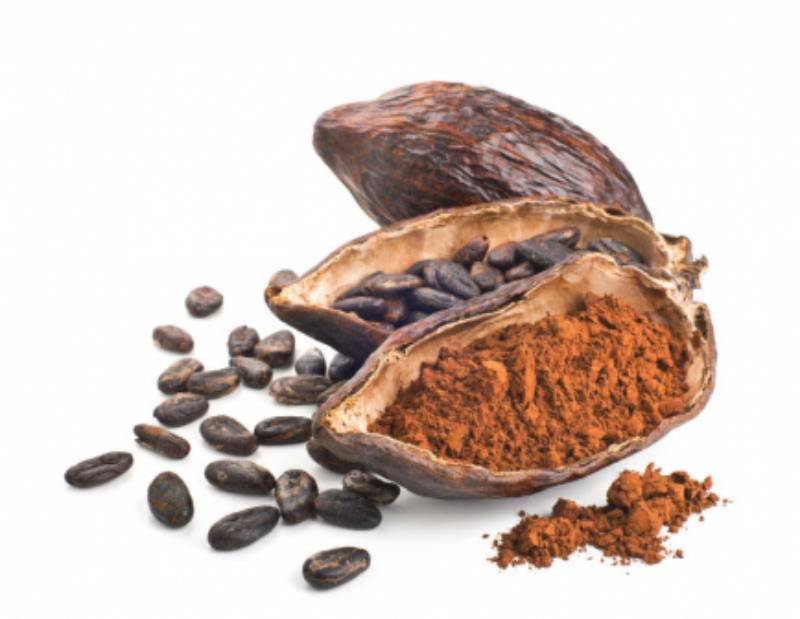
Cocoa bean or cocoa is grown from the cocoa plant.
Uses
It is dried and the seeds can be fermented to make cocoa butter.
Bitter chocolate is made by roasting cocoa seeds then pressing them.
Cocoa powder is made by crushing bitter chocolate removing the fat or cocoa butter and powdering the remains.
Sweet chocolate is produced by adding sugar and vanilla to bitter chocolate.
White chocolate, on the other hand, contains sugar, cocoa butter, and milk solids.
Cocoa is used primarily to make chocolate bars and drinking chocolate, a beverage loved by many in Kenyan homes.
Health benefits enjoyed from consumption of chocolate and its products include antioxidants properties, lowering blood pressure improved cholesterol and blood sugar levels thus reducing risks of heart disease, improves moods by reducing stress, controls diabetes, aids in weight control, has anti-cancer properties and is good for the skin.
Planting
Cocoa requires humid climatic conditions and deep well-drained sandy loam soil that is favourable for its growth.
The crop usually grows well in the humid tropics with temperatures ranges from 20 to 35 degrees Celsius with an annual rainfall of over 1, 200 millimeters.
The PH scale should lie between 4.0 and 7.5.
In Kenya, cocoa is grown in areas like Kilifi which has the ideal conditions for its growth.
According to organicfacts.net the cacao tree stands about 12 to 25 feet tall and grows naturally in tropical climates.
The fruit of the cocoa tree is a pod full of sweet pulp enfolding a cluster of about 20 to 40 cocoa seeds.
Cocoa takes about two and a half years to mature and gives two harvests in a year.
Cocoa crops propagate themselves through lateral shoots, which can occur at any height on the trunk.
The natural vegetative proliferation occurs when the seeds are spread by small rodents’ notes infonet-biovision.org.
The crop has a lifespan of between 30 to 100 years if well taken care of.
Farm practices to enhance it's growing include adding the farmyard manure to practice organic farming.
Pests and diseases
Some of the pests that attack cocoa as highlighted by infonet-biovision.org include cocoa mosquito also known as Helopeltis bug or mirid bugs, pod-borers, spiny bollworm, mealy bugs, leafhoppers, fruit flies and red-banded thrips.
The pests are controlled by improved soil drainage, pruning and weeding, not interplanting with other crops that can act as hosts and adjusting the shading level and use of appropriate pesticides.
Diseases known to attack cocoa as listed by infonet-biovision.org include cocoa bud rot or cocoa black rot, pod rot of cocoa or charcoal pod rot which are controlled by planting in well-drained places, removing infected pods and harvesting regularly.
Harvesting
The ripe seed pods are cut from the trees and split open with pangas or machetes highlights britannica.com
The beans are then removed from the pods with their surrounding pulp.
The pulp is fermented for five to seven days turning it around to ensure uniformity.
The fermented beans on turning reddish-brown are sun-dried to reduce the moisture content to about six to seven percent adds britannica.com.
The cocoa beans are then cleaned, roasted and ground according to the intended end product.

